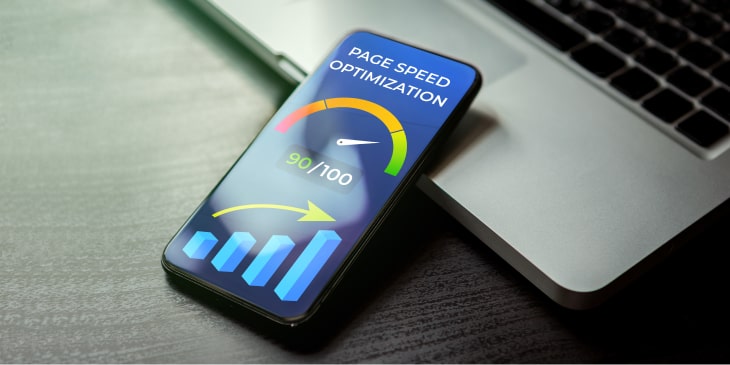
5 Tips To Optimize Your Website Load Speed

While internet connectivity may affect website load speed, online users would know if the problem lies within your website. Sad to say, a sluggish website hinders it from gaining good traffic because people prefer to find the information they need over the web fast and easily.
Aside from giving your visitors a poor experience, a slow website will generally affect your potential of getting more leads and visitors. Website speed is also a huge factor when it comes to Search Engine Optimization (SEO), and it can determine your ranking on certain search results.
Search engines don’t like slow websites because they also want to impress users by providing them with fast and relevant information. Hence, search engines tend to rank slow websites at the bottom end of search results pages. Fortunately, there are several ways to optimize your website’s loading speed. Check out the list of tips below to know more:
1. Use A Caching Plug-in
Shave your website loading speed by using a plug-in like WP Rocket. Caching plug-ins come in free or paid versions. Caching enhances a website’s page loading speeds. It stores static cached files of highly visited website pages. The plug-in loads the data from the cache rather than wait to receive data from the main server every time a user visits a page. This shortens the loading speed since the plug-in retrieves the stored data for visitors to access.
Caching prevents unnecessary server traffic. If your website is hosted on a shared hosting plan with minimal bandwidth, using a caching plug-in to speed up your website is a good idea. Choose a plug-in that performs caching automatically once it’s set up and make sure it has caching features and functions that suit your needs.
2. Optimize Images
Many website owners and developers underestimate the power of optimizing images in content-heavy websites. Heavy or huge images tend to fill up a web server’s disk space. Extracting images from web servers isn’t a big issue for websites hosted on a server with generous bandwidth and disk space. However, it increases hosting expenses and if the visitor has a poor Internet connection, the images still won’t appear on their end.
Optimizing images improve the loading speed pictures your web pages, even if users have slow internet connections, or are using mobile devices with lesser data bandwidth. In addition, optimizing images displays images on different browsers and screen sizes.
When your website loads fast, it boosts the overall user experience for your visitors and is more likely to stay on your web pages and navigate. Hence, you’ll have a higher chance of closing more sales.

Check the techniques below to optimize your images to make your website load faster:
- Choose The Right Image File Format: Portable Network Graphics or PNG is usually used because of its high image quality. However, the file size is also big. Joint Photographic Experts Group or JPEG, on the other hand, has a lower image quality as compared to PNG, but it comes in reduced file size. However, JPEG can be compressed to make it even smaller.
- Resize The Image: Resize the image before you send it to the browser through the server rather than setting the height and width attributes in the HTML code. In this way, it reduces the time for the web page to load, as well as the disk space and bandwidth that the image will consume.
- Check Image Quality: You can reduce the image quality by 10 to 20% without any visible effect on image quality. Doing this step can reduce the file size of an image enough to load faster and help hasten your web page speed.
- Use Image Optimization Tools: There’s a plethora of image editing software that would optimize images for better website speed performance. Some of these tools can even be used for free.
Aside from images, it is also important to note that moving visuals and video clips can slow down your website because these types of content take up more data and bandwidth. So, as much as possible, avoid placing moving images, videos, and even sound clips on your site—especially on the homepage, about us, and contact us pages.
3. Remove Unnecessary Add-ons
There are many plug-ins and add-ons to make website design and function seamless. However, you might notice that using too many add-ons slows down your website speed. Removing some plug-ins can help shorten your website’s load time. Just determine which ones are really important and which ones you can do without. And when you’re choosing plug-ins, avoid ones with complicated scripts that can lag your website speed and overall site performance.
4. Use A CDN Service
Content Delivery Network or CDN service helps reduce latency because Points of Presence or POPs are uniformly distributed so users can receive requested content faster.
So, what’s a CDN? A Content Delivery Network refers to a system of distributed proxy or close servers around the world. For instance, if an online visitor from Korea retrieves content from a US-based server, the CDN reduces latency by providing the data from a Japan-based server.
CDNs are also known as edge servers, caching static content such as images, CSS files, and JavaScript. They are highly beneficial in terms of accessing websites in various geographical locations, enabling users to download content fast.
Therefore, if you have a popular website and you notice its speed is slower than before, it’s high time to consider using a CDN service. With several servers in multiple locations, you can guarantee fast page loads for your website as you grow your visitor base.
5. Work With Your Web Host Provider
Many website owners easily get frustrated with their web host provider when the site is too slow. However, before you make a decision, why not talk to your web host provider and explain your frustrations first? A good web host company is willing to help diagnose the problem and find the best solution to your sluggish website speed.
You can discuss other alternatives to your current hosting plan. But if your website’s traffic is much higher than before, you may need to upgrade your web hosting services. Feel free to ask questions and consider the possibilities before deciding to change your provider.
Conclusion
You can hasten the speed of your website by using plug-ins and optimizing large file images that make your website sluggish. Working with your web hosting provider is also a great way to help improve site speed. You might want also to consider availing of a CDN service if you have a growing number of visitors to make your webpage load faster and accommodate more visitors.